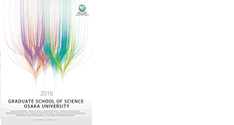Mother-to-embryo vitellogenin transport in a viviparous fish
Viviparity is a major reproduction system in mammals. It means development of the embryos inside the body of the female, eventually reading birth, as opposed to reproduction by laying eggs.
Viviparous animals are also found in non-mammalian species. They are distributed among amphibian, reptile and fish. Most of these viviparous animals, however, do not have a placenta and umbilical cords like the viviparous mammals. How these non-mammalian viviparous animal species transfer nutrients from the mother to their offspring is a mystery of developmental biology.
A team led by Dr. Atsuo Iida at Kyoto University (Current position; Nagoya University) used a viviparous teleost Xenotoca eiseni, which is a fresh water fish belonging to the family Goodeidae and live in Mexico. This study focused on Vitellogenin, which is an egg yolk nutrient protein conserved among most of oviparous vertebrates and invertebrates. The main insight was that the pregnant female fish produces Vitellogenin proteins in the liver and transport them into the ovary, and the offspring in the ovary uptake Vitellogenin protein via the pseudoplacenta. The tracer-labeled Vitellogenin protein injected into the mother fish is subsequently detected in the offspring in the ovary, suggesting Vitellogenin as one of the maternal nutrients in the viviparous fish species.
The mother-to-offspring Vitellogenin transfer is a unique mechanism in the teleost to acquire the viviparous system, because the viviparous mammalian species lost vitellogenin genes in their genome. This study opens a new research area about how non-mammalian viviparous animals gain mechanism to grow offspring in the female body.
The article “Mother-to-embryo vitellogenin transport in a viviparous teleost Xenotoca eiseni.” was published in the Proceedings of the National Academy of Sciences of the United States of America at DOI: https://doi.org/10.1073/pnas.1913012116
Related links











